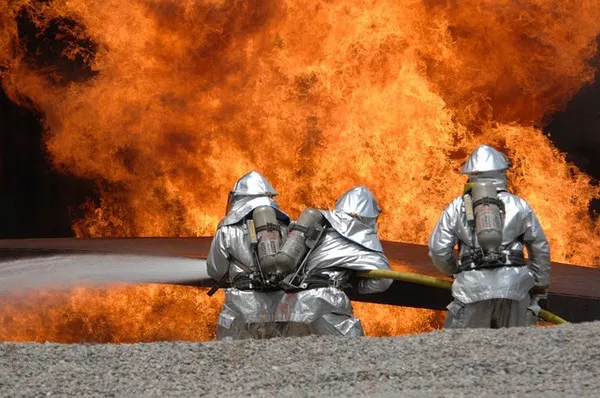Fire safety is of paramount importance in both residential and commercial settings, and having the right firefighting equipment is crucial. Among the various types of fire extinguishers available, water extinguishers play a significant role in combating specific types of fires. In this comprehensive guide, we will explore the features and uses of water extinguishers, focusing on the type of fire they are most effective against – Class A fires. Understanding the strengths and limitations of water extinguishers will empower you to make informed decisions for your fire safety needs.
Water Extinguishers: An Overview
Water extinguishers are one of the oldest and most commonly used types of fire extinguishers. They are designed to handle fires involving ordinary combustible materials, such as wood, paper, cloth, and certain plastics. These types of fires are classified as Class A fires. Water extinguishers work by cooling the burning material below its ignition temperature, extinguishing the fire in the process.
Class A Fires: Characteristics and Risks
Class A fires involve solid materials that are not metals or chemicals. Common examples include burning wood, paper, fabrics, rubber, and some plastics. These fires are typically slow-burning and produce embers and ash, making them particularly dangerous if not extinguished promptly.
Class A fires are prevalent in residential settings, offices, schools, and places where ordinary combustible materials are present. They pose a significant risk to property and human life, emphasizing the need for suitable fire extinguishing equipment like water extinguishers.
The Effectiveness of Water Extinguishers on Class A Fires
Water extinguishers are highly effective for Class A fires due to their cooling properties. When water is applied to the burning material, it absorbs heat, reducing the temperature below the ignition point. As a result, the fire cannot sustain itself, and the combustion process is halted.
Additionally, water is widely available and affordable, making water extinguishers a practical choice for many fire safety applications. They are easy to use, non-toxic, and environmentally friendly, further adding to their appeal.
Limitations of Water Extinguishers
While water extinguishers excel in extinguishing Class A fires, they are not suitable for all types of fires. It is essential to understand their limitations to ensure proper fire response and safety:
A. Ineffectiveness on Flammable Liquids: Water is not recommended for extinguishing Class B fires involving flammable liquids like gasoline, oil, or paint. Attempting to extinguish flammable liquid fires with water can spread the fire and cause it to reignite, making the situation more hazardous.
B. Electrical Fire Hazards: Water should never be used on electrical fires (Class C fires) as it conducts electricity. Attempting to extinguish an electrical fire with water can lead to electric shock and other dangers. Instead, dry chemical or carbon dioxide (CO2) extinguishers are suitable for Class C fires.
C. Metal Fires: Water is also ineffective for Class D fires involving flammable metals such as magnesium, titanium, or potassium. These fires require specialized extinguishing agents specifically designed for metal fires.
Best Practices for Using Water Extinguishers
When using water extinguishers to combat Class A fires, consider the following best practices to ensure effective and safe extinguishing:
A. Stand at a Safe Distance: Maintain a safe distance from the fire while operating the extinguisher. This helps prevent injuries from flying embers or flames.
B. Aim at the Base: Direct the water stream at the base of the fire, not at the flames. By targeting the burning material’s base, you disrupt the combustion process more effectively.
C. Sweep Motion: Use a sweeping motion while spraying the water to cover the entire fire area evenly.
D. Confirm Extinguishment: After using the extinguisher, monitor the area to ensure the fire is fully extinguished. Be prepared to reapply if necessary or call for professional assistance if the fire persists.
Conclusion:
Water extinguishers are indispensable firefighting tools, particularly effective against Class A fires involving ordinary combustible materials. By understanding their capabilities and limitations, you can make informed decisions about fire safety in your home or workplace. Remember to use water extinguishers safely and in accordance with their intended purpose to protect lives, property, and the environment. When facing other types of fires, always use the appropriate extinguishing agent to ensure a swift and efficient response to emergencies. Fire safety is everyone’s responsibility, and having the right knowledge and equipment is key to effectively handling potential fire hazards.

